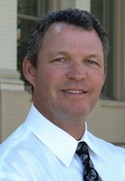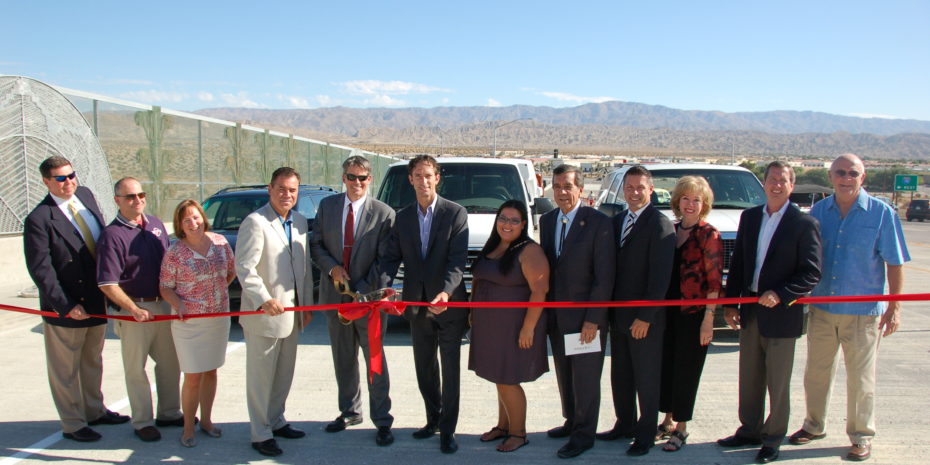By Sam Stone ’14
To the average American, the term “Council of Governments” sounds more like a redundancy than an actual governing body. After all, there are nearly 90,000 distinct government organizations in the United States, among them some 19,000 municipal governments responsible for planning and managing cities all across the country. With so many different organizations, overlap and dysfunction is inevitable, and California is no stranger to perils of bureaucracy. Although California boasts less than 500 municipal governments (by comparison, government-averse Texas has more than 1,200 municipalities), the Golden State is also home to roughly 3,300 special districts. These special districts, typically created to manage issues like irrigation or transportation, often weave through multiple city boundaries and can represent thousands of people. As a result, for California businesses, city officials, and residents, navigating local government can be a bureaucratic nightmare.
At the same time that the California bureaucracy has grown drastically over the past few decades, the fiscal insolvency of the state government has had broad consequences for individuals, businesses, and governments across the state. Healthcare benefits, employee compensation, and government jobs have been slashed across the board. Funding for elementary, secondary, and higher education has been cut, and in-state tuition has increased dramatically for University of California and California State University students. Statewide austerity efforts have hit local governments as well. Massive cuts in funding from Sacramento have left local governments strapped for cash. Statewide program cuts have forced local authorities to compensate with increases in support for local programs. Forced to do more with less, local governments have become increasingly creative in their cost cutting efforts.
While no California government has escaped the impacts of the recession and budget crisis, cities involved in Councils of Governments (COGs) have demonstrated that joint efforts by smaller municipalities can drastically reduce costs and improve efficiency by coordinating authority between disparate and overlapping agencies. A COG is an agency that works on behalf of local authorities to manage certain programs for the region as a whole. Typically, COGs help to plan and manage issues like transportation, environmental protection, and economic development that are best addressed from a regional perspective. A single COG may represent numerous governmental organizations. Elected officials from represented cities and counties serve as the COG’s governing board, ensuring that the organization answers to local interests even while considering problems from a broader perspective. When they work best, COGs successfully combine the resource of large groups with the responsiveness of smaller bodies.
The Inland Empire is no stranger to COGs. In an attempt to coordinate the actions of the cities and special districts in the region, elected officials from all across Southern California came together to form the Southern California Association of Governments (SCAG) in the 1960s. SCAG, the largest COG in the nation, represents nearly 200 cities and more than 18 million residents from six different counties. As Southern California has grown larger, several sub-regional COGs have emerged to focus on local interests in an increasingly large organization. Among the most successful are the Western Riverside Council of Governments (WRCOG) and the Coachella Valley Association of Governments (CVAG). Each agency is responsible for millions of dollars of transportation and economic development projects in the Inland Empire, and serves as a unique intermediary between local and statewide authority. While their exact responsibilities differ at the margins, both organizations provide valuable planning and policy services to the Inland Empire, including the Coachella Valley.
Western Riverside Council of Governments

The massive population surge in Southern California over the past half century has created a number of sub-regions defined by their own unique interests and concerns but few organizations to meet their needs. Riverside County, the fastest growing county in the state, as WRCOG Executive Director Rick Bishop is quick to point out, is one such place, with a number of specialized needs of its own—needs that the COG model is uniquely suited to meet. Although his organization represents more than twenty unique local governments (including 17 cities, the County of Riverside, and two water districts) Bishop notes that WRCOG is actually “very fast as far as government agencies are concerned.” While state authorities are inhibited by their distance from local authorities, COGs are able to respond quickly to “whatever issue arises” in a local community with the resources of a larger agency.
Bishop points to the success of WRCOG’s Home Energy Renovation Opportunity (HERO) Program, an energy and water efficiency program, as an ideal example of how a COG can meet the needs of its community when cities lack the ability to do so. The HERO program, designed to provide local homeowners with financing for energy and water efficiency products like solar panels and insulation, came to be as a result of both state and local measures. In 2008, Governor Schwarzenegger signed into a law a bill to allow cities to participate in the financing of solar panel retrofitting programs, and later signed a 2010 bill to authorize participation in water efficiency financing. “The problem with the law was that cities, because of the economic circumstances they were in, did not have the staff or the time or the money to invest in a program like that,” says Bishop. While city officials were in favor of the program, the economic recession made local implementation financially infeasible. With the resources of a regional agency, Bishop and WRCOG were able to step in, and offer the program to the region. The value of backing low-risk investments in infrastructure was not lost on local businesses, and WRCOG was able to attract $325 million worth of private sector investment to finance the project upfront. Such a program, designed to promote economic development along with other issues like energy and environmental protection, Bishop believes, is the “model for how we [at WRCOG] approach other issues.” As a program with regional support, substantial economic and environmental benefits, and little cost to local taxpayers, the HERO program, now the largest energy-retrofit program in California, is a perfect example of how COGs like WRCOG have been able to navigate successfully the complex, often conflicting policies pursued by state and local governments.
Transportation issues are also commonly addressed by COGs. Public transportation projects can be expensive and may reach across many local jurisdictions, making it advantageous for regional agencies to consider the issue from a broad perspective. WRCOG coordinates with the Riverside County Transportation Commission (RCTC) to fund highway interchanges, bridges, railways, and roads each year. Much of this funding comes from Riverside County’s Transportation Uniform Mitigation Fee (TUMF), a fee levied on property developers. At its height, the Riverside County TUMF program amounted to more than $4 billion each year, making it the largest of its kind in the country.
While transportation remains WRCOG’s biggest issue, the economic recession took a massive toll on the program. “Our TUMF funding is 10% of what it was 5 years ago,” Bishop observes. It’s not all bad news though. Although the economic recession has slashed the size of WRCOG’s TUMF program, it has also driven down construction costs by as much as 50 percent. A silver lining, Bishop acknowledges, but with declines in revenue and economic activity, his organization’s budget still ends up “a long way from even-steven.” Despite the repercussions of the economic recession, Bishop remains hopeful and confident that WRCOG and Riverside County have a bright future ahead. “Western Riverside is right in the middle of the formative years of what it’s going to become. The issues that cities and counties are facing are way beyond just transportation, just schools, just water, they all blend together, and a COG is in a great spot to deal with them.”
Coachella Valley Association of Governments

Seventy miles east, the Coachella Valley Association of Governments, situated in Palm Desert, deals with many of the same issues as its counterpart in Riverside. One big focus for CVAG is its Coachella Valley Multiple Species Habitat Conservation Plan (MSHCP). CVAG Executive Director Tom Kirk points out that his agency evolved out of opposition in the early 1970s to a proposed refinery in the Banning Pass. The Coachella Valley MSHCP, administered by CVAG’s sister agency, the Coachella Valley Conservation Commission, is funded much like TUMF programs: through a fee levied on developers meant to account for the impact of construction on the local environment. WRCOG has a MSHCP program of its own, but it is dwarfed in size by CVAG’s $50 million MSHCP, which conserves over 240,000 acres of open space and protects 27 different plant and animal species. Just as it has for WRCOG, the recession has taken a toll on the revenues dedicated to the program, but simultaneously driven down construction and land acquisition costs. Kirk sees both challenges and opportunities. “When we have ten bidders [for a construction project], and none of them are able to make a profit on the project, that’s not ultimately sustainable.” With such little construction occurring in the region, developers are desperate—to a point that they will take a loss just to get work. On the positive side, when it comes to purchasing land, “the recession has provided us with the opportunity to stretch our dollars further and be much more efficient with our resources.”
Like WRCOG, CVAG also administers a number of transportation programs with RCTC. Unlike WRCOG’s TUMF, CVAG gets the bulk of its transportation funding through Measure A, a sales tax approved by voters in 1988. Using this revenue, CVAG (and RCTC) have supported major infrastructure projects, such as the Bob Hope I-10 Interchange, a $25.5 million project which opened in the fall of 2011 after two years of construction. The Bob Hope Interchange project, located off Ramon Road near the Agua Caliente Resort Casino, added an eight-lane overcrossing and extension on Bob Hope Drive and Varner Road, created a new interchange west of the current Ramon Road Interchange, added a six-lane bridge going over the Union Pacific Railroad, and modified ramps on westbound and eastbound I-10.
While WRCOG and CVAG are both instrumental in developing Southern Californian infrastructure, as Kirk points out, the roads CVAG builds are being used for an entirely different purpose than most in the Inland Empire. “Less than 2 percent of our trips leave the Coachella Valley, so we are not tied into the commuter market in LA.” COGs like WRCOG may have to consider how their actions fit into the larger Los Angeles-based community. But as a result of its geographic and economic isolation (the Coachella Valley economy is driven by tourism) from the Inland Empire, “there’s a sense of community in the Coachella Valley, more so than in a lot of places. That has benefited an organization like mine, where I think people generally think highly of regional organizations like CVAG.” Kirk goes on, “There’s a reasonably strong sense of regionalism, despite the fact that there are nine cities here.”
It’s because of CVAG’s coherent regional identity that the organization has been able to branch out and pursue a number of unique programs, including a street sweeping program and a regional homeless shelter, among others. Most COGs receiving funding from their member cities, which are often reluctant to sign off on the distribution of those funds to their neighbors. Not so with CVAG, according to Kirk. The ability of CVAG members (including Blyth, Cathedral City, Coachella, Desert Hot Springs, Indian Wells, Indio, La Quinta, Palm Desert, Palm Springs, Rancho Mirage, Aqua Caliente BCI, Cabazon BMI, and the County of Riverside) to agree on priorities and allow for action has been impressive, Kirk boasts. “The system has worked incredibly well. We set priorities regionally no matter where the money is coming from.”
Perhaps that explains why COGs like CVAG and WRCOG are growing so quickly. Kirk notes that “we had one typewriter and two staff people for ten years, and that was about it.” But when asked if he thinks CVAG will continue to grow, Kirk hesitates. “It’s both grown and shrunk in scope. Programs have been spun off, and our focus has shifted.” In Riverside, Kirk’s counterpart at WRCOG sees it as a choice. “If you take a look at the history of California governance, less is usually seen as more…but if the city can’t do it, and your choice is a COG run by a board of elected officials, or the state, what would you rather have? All of the sudden, the regional side doesn’t look that bad.”
Whichever way you cut it, both Kirk and Bishop seem to be right: successful COGs like WRCOG and CVAG are here to stay. Their varied goals and unique structure have made them integral and indispensable agencies for Californians throughout the Inland Empire. With their regional focus and scope, they offer a compelling middle ground between state and local governments. In a subsequent issue of the Inland Empire Outlook, we will examine the role of several other major COGs shaping, stimulating, and supporting the Inland Empire.


Sorry, comments are closed for this post.